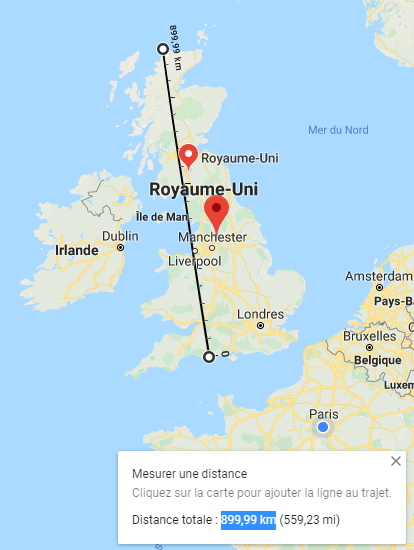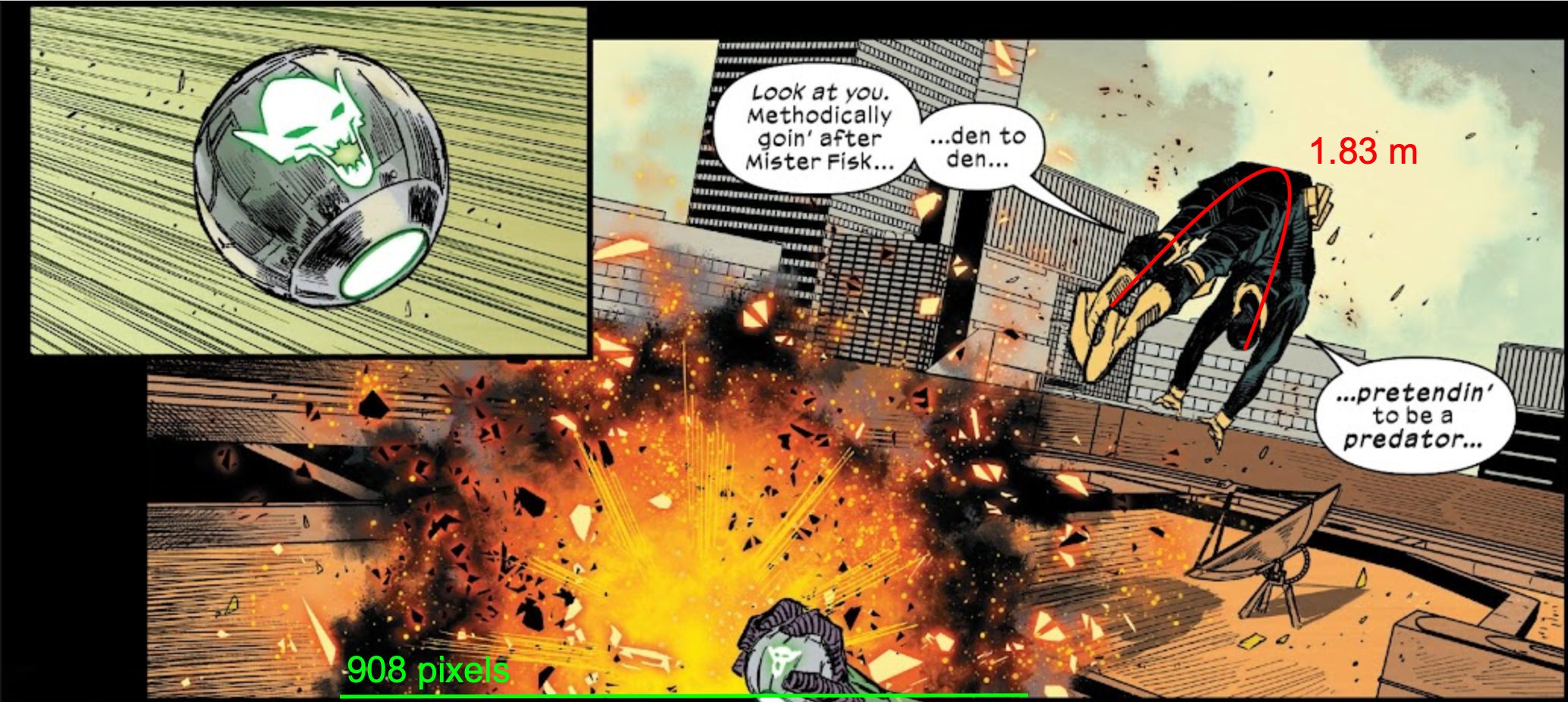- 33
- 3
Has anyone ever had the idea of calculating Saitama's speed at I/O by assuming that he moves to create rays that cover a part of the area or fill a part of the volume of I/O?
Follow along with the video below to see how to install our site as a web app on your home screen.
Note: This feature may not be available in some browsers.
That is what I was saying earlier, yes.I did find on the explosion yield calcluations regarding this statement at least for spheres (Not for human bodies):
"For a sphere for instance this would not be 4*pi*r^2 / 2, but instead pi*r^2 as that is the area of the largest cross-section which, in this case, is a circle with the same radius as the sphere laid through its center (in such a way that it is orthogonal to the expansion of the explosion)."
[...] because the area of any sphere is just 4x the area of a circle of equal radius, hence why [...]
Based on what has been discussed, can Saitama's calculation be changed from /2 to /4?That is what I was saying earlier, yes.


Sure.Based on what has been discussed, can Saitama's calculation be changed from /2 to /4?
Self-explanatory. Frag is large chunks. V. Frag is tiny chunks compared to the original volume (This one needs a bit of eyeballing). Pulverization is straightforward, entire thing turns to dust with no solid remains.How do you decide which end is useable?
References for Common Feats
Throughout fiction and real life, there have been numerous feats demonstrating a certain character's or object's destructive power. This page's purpose is to consolidate calculations for those feats for better convenience in determining an object's or character's Attack Potency or Durability...vsbattles.fandom.com
just calculate the volume of the part in the middle and subtract it from the volume of the capfor feats like this, do I still just use spherical cap or is there some other shape to account for the part in the middle not destroyed?
Bump, I've seen this method used in some calcs, not sure if we still do use it.I'd one question regarding ground explosion calcs, are we supposed to calculate volume of non-spherical explosions (such as parallel or kind of conical) then equate it with spherical volume to get its radius then apply explosion formula? Or we just take radius as whatever it extends to on ground disregarding it's shape/volume?
Pretty much the latter, in the lack of better options.I'd one question regarding ground explosion calcs, are we supposed to calculate volume of non-spherical explosions (such as parallel or kind of conical) then equate it with spherical volume to get its radius then apply explosion formula? Or we just take radius as whatever it extends to on ground disregarding it's shape/volume?
So latter one is safe to do generally, gotcha. Thanks for the answer!Pretty much the latter, in the lack of better options.
If a character can destroy 8 suns but has 5 friends to help him, what tier should he get? I'm not too confident in my calculations.4.75 Kilojoules would equate to 9-C.
I imagine the × 1042 was supposed to be 10^42 (considering the context of their latter question).4.75 Kilojoules would equate to 9-C.
But... that's what we use for storm calcs?I have a question. Why can’t we use both CAPE and Condensatioj for storm calcs?
I mean both in the same storm calc. Like using both condensation and CAPE instead of separating them into different calcs.But... that's what we use for storm calcs?
This'll require some skillful ang-sizing that I've seen a few folk master.Any idea how to get the volume of this? (I already have a good idea with the elongated crater, just need a good idea for the crater on that hill please)
If you already know the dimensions of the elongated part, why not just use that to find the dimensions of the hole at the edge?Any idea how to get the volume of this? (I already have a good idea with the elongated crater, just need a good idea for the crater on that hill please)
Well, here's the situation about this whole thing. I have considered that, but just needed some clarification as to... what volume should I use to calculate. Back then like about... two years ago, I just assumed it was a semi-ellipsoid and called it a day. But the more and more I look back on what I did wrong and what I concluded was completely off the mark. The feat itself on that hill(?) is a lot like this but on a more spherical incline than a pyramid. It's like you grabbed a straw and poked through a cone very near at the edge. I visualize it like this patch on the cone, but more rounded around the edges. And I genuinely have done a lot of searching around to understand what... that is supposed to be or if anyone has a name for something like that.If you already know the dimensions of the elongated part, why not just use that to find the dimensions of the hole at the edge?
It's due to perception that it appears to be a cone. Use cylindrical volume. Imo.Honestly didn't expect anyone to respond on this thread as soon as I sent it. Granted, it was in hour intervals but still \^o^/
Well, here's the situation about this whole thing. I have considered that, but just needed some clarification as to... what volume should I use to calculate. Back then like about... two years ago, I just assumed it was a semi-ellipsoid and called it a day. But the more and more I look back on what I did wrong and what I concluded was completely off the mark. The feat itself on that hill(?) is a lot like this but on a more spherical incline than a pyramid. It's like you grabbed a straw and poked through a cone very near at the edge. I visualize it like this patch on the cone, but more rounded around the edges. And I genuinely have done a lot of searching around to understand what... that is supposed to be or if anyone has a name for something like that.

bumpWould anybody here know how to get the length of the red line in this image here? I'm trying to calculate how strong the explosion is and I've seen other blogs get the height of a character through a curved line before I just don't know how to get the exact measurement.
